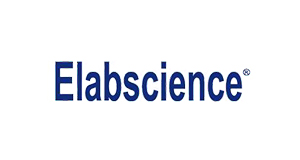Recombinant Human HMGB1 protein (His tag)
Recombinant Human HMGB1 protein (His tag)
Artikelnummer
ELSPDMH100141-20
Verpackungseinheit
20 µg
Hersteller
Elabscience Biotechnology
Verfügbarkeit:
wird geladen...
Preis wird geladen...
Abbreviation: HMGB1
Target Synonym: High Mobility Group Protein B1;High Mobility Group Protein 1;HMG-1;HMGB1;HMG1
Target Species: Human
Expression Host: HEK293 Cells
Fusion Tag: C-His
UNIProt ID: P09429
Background: High-mobility group box 1 protein (HMGB1), also known as HMG-1 or amphoterin previously, is a member of the HMGB family consisting of three members, HMGB1, HMGB2 and HMGB3. HMGB1 is a DNA-binding nuclear protein, released actively following cytokine stimulation as well as passively during cell death. It is the prototypic damage-associated molecular pattern (DAMP) molecule and has been implicated in several inflammatory disorders. HMGB1 signals via the receptor for advanced glycation end-product (RAGE) and members of the toll-like receptor (TLR) family. The most prominent HMGB1 protein and mRNA expression arthritis is present in pannus regions, where synovial tissue invades articular cartilage and bone. HMGB1 promotes the activity of proteolytic enzymes, and osteoclasts need HMGB1 for functional maturation. As a non-histone nuclear protein, HMGB1 has a dual function. Inside the cell, HMGB1 binds DNA, regulating transcription and determining chromosomal architecture. Outside the cell, HMGB1 can serve as an alarmin to activate the innate system and mediate a wide range of physiological and pathological responses. Extracellular HMGB1 represents an optimal "necrotic marker" selected by the innate immune system to recognize tissue damage and initiate reparative responses. However, extracellular HMGB1 also acts as a potent pro-inflammatory cytokine that contributes to the pathogenesis of diverse inflammatory and infectious disorders.
Sequence: Met1-Glu215
Purity: > 95 % as determined by reducing SDS-PAGE.
Formulation: Lyophilized from sterile PBS, pH 7.4.
Normally 5 % - 8 % trehalose, mannitol and 0.01% Tween80 are added as protectants before lyophilization.
Please refer to the specific buffer information in the printed manual.
Endotoxin: Please contact us for more information.
Target Synonym: High Mobility Group Protein B1;High Mobility Group Protein 1;HMG-1;HMGB1;HMG1
Target Species: Human
Expression Host: HEK293 Cells
Fusion Tag: C-His
UNIProt ID: P09429
Background: High-mobility group box 1 protein (HMGB1), also known as HMG-1 or amphoterin previously, is a member of the HMGB family consisting of three members, HMGB1, HMGB2 and HMGB3. HMGB1 is a DNA-binding nuclear protein, released actively following cytokine stimulation as well as passively during cell death. It is the prototypic damage-associated molecular pattern (DAMP) molecule and has been implicated in several inflammatory disorders. HMGB1 signals via the receptor for advanced glycation end-product (RAGE) and members of the toll-like receptor (TLR) family. The most prominent HMGB1 protein and mRNA expression arthritis is present in pannus regions, where synovial tissue invades articular cartilage and bone. HMGB1 promotes the activity of proteolytic enzymes, and osteoclasts need HMGB1 for functional maturation. As a non-histone nuclear protein, HMGB1 has a dual function. Inside the cell, HMGB1 binds DNA, regulating transcription and determining chromosomal architecture. Outside the cell, HMGB1 can serve as an alarmin to activate the innate system and mediate a wide range of physiological and pathological responses. Extracellular HMGB1 represents an optimal "necrotic marker" selected by the innate immune system to recognize tissue damage and initiate reparative responses. However, extracellular HMGB1 also acts as a potent pro-inflammatory cytokine that contributes to the pathogenesis of diverse inflammatory and infectious disorders.
Sequence: Met1-Glu215
Purity: > 95 % as determined by reducing SDS-PAGE.
Formulation: Lyophilized from sterile PBS, pH 7.4.
Normally 5 % - 8 % trehalose, mannitol and 0.01% Tween80 are added as protectants before lyophilization.
Please refer to the specific buffer information in the printed manual.
Endotoxin: Please contact us for more information.

 English
English










